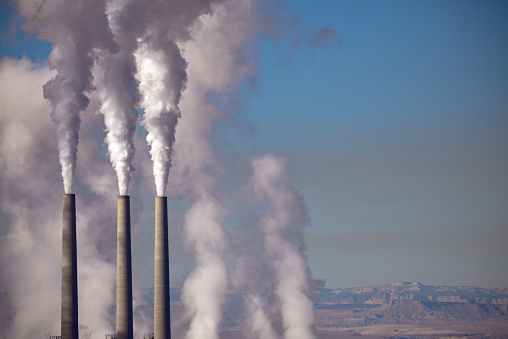
Scholar argues that the EPA has to look for cheaper, more efficient enforcement strategies.
Like everyone else, government regulators struggle in times of financial belt-tightening. And for the U.S. Environmental Protection Agency (EPA), budget constraints make it more difficult to enforce environmental regulations. But a recent paper by legal scholar Joel A. Mintz of the Nova Southeastern University Law Center offers the EPA five cost-effective ways it can improve environmental enforcement.
Mintz’s paper comes on the heels of Congress’ $60 million budget cut dealt to the EPA last year, although Mintz argues that the EPA has experienced financial problems since the mid-1980s.
According to Mintz, the EPA’s Office of Enforcement and Compliance Assurance (OECA) should implement five changes to improve its enforcement capabilities during periods of budget constraints.
First, Mintz suggests that the OECA should reinstate the policy of sending letters to companies with compliance problems, inviting them to reveal and remediate those problems in exchange for substantial penalty reductions. He indicates that this policy, which was in place during the Clinton Administration, was a low-cost strategy that produced positive results.
Second, Mintz proposes publicizing environmental enforcement actions as much as possible. To do this, he calls the EPA to assist its regional offices in conveying a unified message. He also suggests that the EPA should “notify other companies in the same industry, directly and on a routine basis, when the EPA brings or resolve non-trial enforcement cases with competitor firms.”
Third, Mintz urges the EPA to establish stronger working relationships with professionals and organizations that can promote compliance. For example, Mintz thinks that former EPA employees might be enlisted to help the EPA at very low cost. He also recommends working with insurance companies to develop “suggestive innovative environmentally indexed insurance policies” to make environmental compliance more attractive to companies. Finally, he thinks the EPA could coordinate with environmental advocacy groups and local governments to help with enforcement.
Fourth, Mintz says that the OECA could use self-certification programs to enforce environmental laws. He points to examples like the Colorado Department of Public Health & Environment’s Hazardous Waste Small Quantity Generator Self-Certification Program. The program distributes compliance checklists to regulated facilities and requires the facilities to complete and return a statement of compliance. The program is successful because it “ensures essentially universal participation and universal exposure to the training on, and familiarization with, regulatory compliance.” Mintz believes similar programs could help the EPA promote compliance with water spill prevention requirements, prohibitions on tampering with automobile pollution control equipment, and asbestos regulations in school buildings.
Finally, Mintz recommends that the EPA should upgrade its enforcement technology. He highlights the remarkable progress that remote sensing technologies have already made in measuring environmental compliance. Thus, he calls for the EPA to create a permanent task force to follow technological developments. In his opinion, the EPA could require violators to use such devices to “report the results of its self-monitoring to EPA.”
The EPA is already implementing cost-reducing changes. The OECA recently launched an initiative – the Next Generation Compliance Program – comprising five components designed to improve the effectiveness of the OECA’s enforcement activities. These include permit design, advance monitoring, electronic reporting, transparency, and innovative enforcement. The agency issued a memorandum in January detailing its use of next-generation compliance in the civil enforcement context, and has developed a strategic plan for the next several years to maximize these programs.



